I’ve learned how complicated the relationship between Sweden and Finland can be first-hand, having a Finnish mother and Swedish father as well as two big families on either side of the Gulf of Bothnia. Family events including both sides are always interesting, to say the least.
Why is that then? Well, the two countries’ common history has certainly not been without complications, and Finland does not entirely share the Scandinavian roots of Sweden’s other neighbors (Norway and Denmark) which can also play a role here.
In the end, I love both sides of my family dearly and there is generally a very strong bond between the two Nordic countries, but when the two cultures meet it’s not always smooth sailing and warm embraces.
Let’s take a closer look at the Swedish-Finnish relationship, and answer some big questions you might have from the get-go.
How Swedes and Finns Like Each Other
Do Finns Like Swedes?
The majority of Finns likely view Swedes positively and consider Sweden a pleasant neighbor. Still, there is a growing part of Finns that openly dislikes Swedish speakers. So much so that more than one in three young Swedish-speaking Finns feel harassed due to their mother tongue (Yle 2019).
There are around 450 000 Finns who have Swedish as their mother tongue, and who increasingly report harassment from hostile Finnish-speakers despite—or perhaps because—the fact that Swedish is one of two official languages in Finland and is taught to every Finn in school.
There is also a tendency among Finnish men to refer to Swedish men with various homosexual slurs, alluding to the more macho-centric culture of Finns (Hofstede 2021) in comparison to Swedes, though there is a trend in Finland towards more acceptance lately (much like in other western cultures).
Do Swedes Like Finns?
In my experience, most Swedes have a positive view of Finns in general, and a 2018 Novus poll seems to back this up. In this poll 72% of Swedes responded that they hold a positive view of Finland. That said, the poll also shows that most Swedes still do not know very much about their eastern Nordic neighbor, signaling that there is still some distance between the two countries and cultures.
Swedes’ attitudes towards Finns have not always been positive or as empathetic as it is today, as they have historically been perceived as “looking down” on Finns (and not as the Nordic equals they are seen as today).
After all, Sweden has colonized, annexed, and ruled Finland for more than 600 years before Finland was separated from the realm (although it became part of the Russian empire instead).
Differences between Swedes and Finns
How are Swedes and Finns Different?
Swedes are seen as slightly more extrovert, informal, risk-averse, liberal, democratic, and inclusive — while Finns are seen as slightly more introvert, formal, risk-tolerant, conservative, authoritarian, and macho.
I base these generalizations on a few different things: personal experiences, the opinions of my Swedish and Finnish family, as well as scientific data from scientific studies such as the Culture Compass Index by Geert Hofstede:
There’s a story I heard a while back that described the difference between how someone from Sweden thinks compared to someone from Finland. I’ve tweaked it a bit to keep up with the times and make it a bit more grounded:
A group of Swedes and Finns encounter a big elephant.
- Most of the Swedes want to help the elephant, preferably all elephants in the world. Evaluation committees are formed and a citizenship is quickly offered. Finally, an “ombudsman” is assigned to evaluate any challenges the elephant might face going forward.
- Most of the Finns instead slowly become anxious and collectively feel the elephant might be looking down on them. So they get angry and prepare to fight the elephant. In the end though, they clench their fists and walk away with a mixed feeling of humiliation and lingering anger.
These are not characteristics of all Swedes and Finns, but it does describe parts of the population and perhaps even parts of each nation’s identity pretty accurately.
Why Are Swedes and Finns Different?
In a scientific sense, any differences between Swedes and Finns generally stem from differences in language, traditions, social behavior, humor, and ability to convey feelings.
To elaborate, Swedes and Finns do not share the same linguistic or ethnic roots, despite being very close geographically, politically, and culturally.
This can mostly be explained by the Swedish language and traditions stemming from Scandinavian and Norse culture, while the Finnish roots lie in Finno-Ugric cultures from the eastern shores of the Baltic sea — two cultures that did not have much of an overlap as they were developing.
Swedish and Finnish Ethnicity
Are Swedes and Finns the Same Ethnicity?
As the Finns are considered to be part of the Baltic Finnic ethnic group they are not considered Scandinavian (as Sweden is). There is, however, a sub-group of some 450 000 Sweden-Finns whose heritage and ethnicity would be the same as the Swedes in Sweden.
Are Swedes and Finns Related?
Modern-day Swedes are genetically more closely related to Danes and Norwegians (as well as Germans and Brits) than to Finns according to recent DNA studies. That said, Swedes have inhabited the coasts and islands of Finland since before Viking times until today (but according to DNA studies this might not have included much intermingling between the two).
The surprising lack of links between Finnish and Swedish DNA was discovered by Swedish and Finnish scientists at Karolinska Institutet in Stockholm, where they mapped out 3000 Europeans’ (of whom 1500 were Swedish) DNA samples in order to see how Swedes were related to other Europeans.
The results were particularly interesting considering how close the two countries are geographically speaking (Scandinavians have lived along the coasts of Finland since before the Viking Age), and as Finland used to be part of Sweden for six hundred years.
It seems there has not been much intermingling with the inland Finns in either case.
Do Sweden and Finland Speak the Same Language?
Swedish is the mother tongue of about 5% of Finns, and is understood by the majority of Finns as it is taught by law in school (being one of two national languages). Finnish, on the other hand, is not remotely related to Swedish linguistically speaking.
Finnish is instead a Finno-Ugric language (along with Estonian and Hungarian) part of the Uralic language group, while Swedish is a Germanic language (along with English, German, Dutch, etc.) in the Indo-European language group.
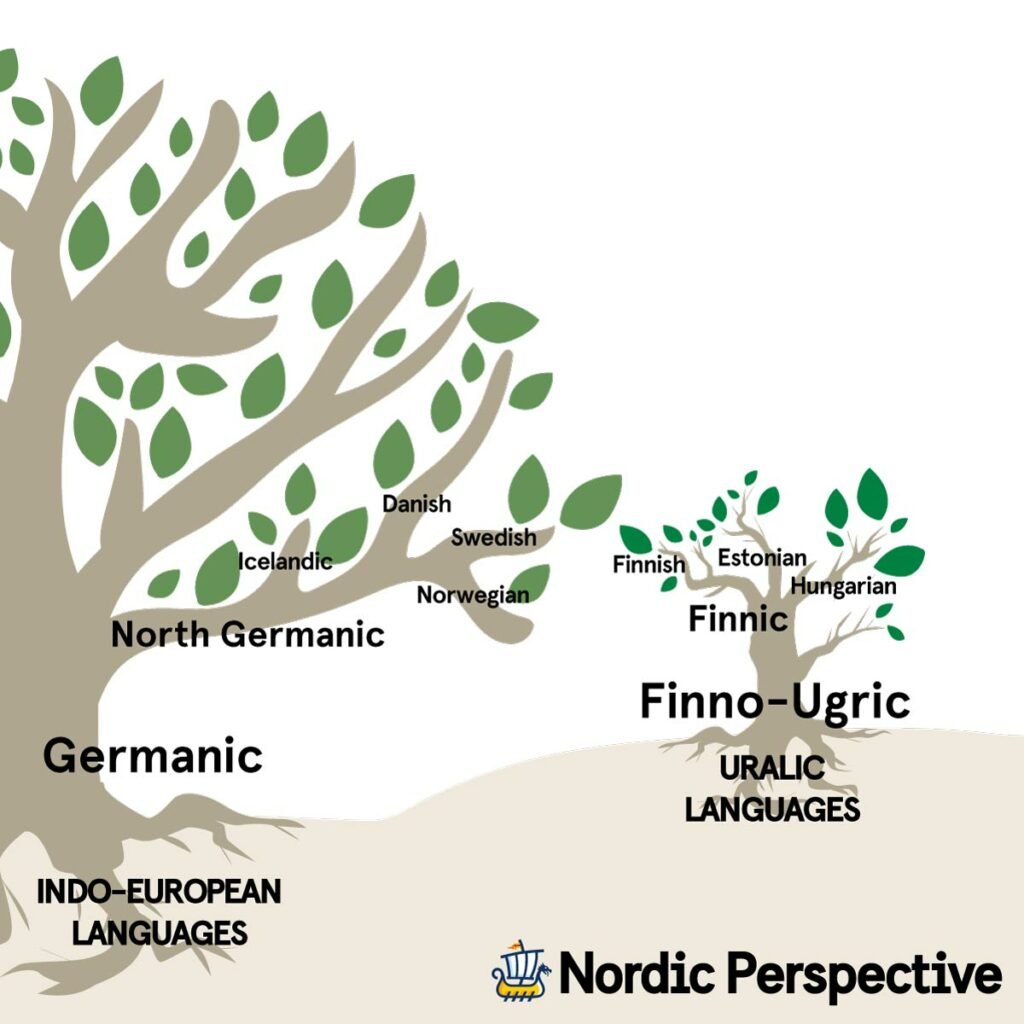
Why Do Finns Learn Swedish In School?
Finns learn Swedish in school because Finland is officially a bilingual country, with Finnish and Swedish as its two official languages (rooted in Finland’s history as part of the Kingdom of Sweden for 600 years until 1809). The teaching of Swedish in Finnish schools is mandated to maintain the country’s bilingual status, to support the cultural and linguistic rights of the Swedish-speaking population, and to provide opportunities in the rest of the Nordics for the Finnish-speaking population.
Though the Swedish-speaking minority in Finland today only constitutes about 5.2% of the total population, this educational policy ensures that Finnish-speaking students are exposed to and gain proficiency in the country’s second official language, promoting unity and mutual understanding among the populace.
Moreover, learning Swedish provides Finnish students with broader opportunities within the Nordic region, given the close historical, economic, and cultural ties between Finland and Sweden. Proficiency in Swedish facilitates cross-border communication, education, and employment opportunities in the Nordic countries, where Swedish plays a significant role due to its linguistic similarities to Danish and Norwegian.
As a national language, Swedish is taught to every Finn in school no matter their mother tongue. It also means signs can be written in both languages, much like French in Canada, depending on the location.
But in the end, the majority of people in Finland have Finnish as their mother tongue and learn Swedish later in life, in school from the 6th grade, alongside English and other foreign languages.
Why Is Finland Not Part of Scandinavia?
As the Finns are considered to be part of the Baltic Finnic ethnic group they’ve had a separate culture from the Scandinavian countries throughout most of history (although parts of the Finnish coast shared the same culture group as the Scandinavian countries during the bronze age.
The people of the Nordic Bronze Age Culture were the forefathers of the Norse (Vikings), so there are some Scandinavian links in Finland historically speaking.
Finland is generally not considered part of Scandinavia (Sweden, Denmark, and Norway) by the locals. However, the broader Scandinavian definition commonly used in the US and UK usually includes Finland, Iceland, and the Faroe Islands when they talk of Scandinavia.
The History Between Sweden and Finland
Sweden and Finland share a deep historical connection, with Finland being part of the Swedish Kingdom from the late 12th century until 1809 (for reference, that’s 600 years or more than twice as long as the US has been an independent country).
This long union was characterized by shared administration, culture, and legal systems, deeply influencing Finnish society.
The war against Russia in 1808-1809 led to Sweden ceding Finland to the Russian Empire as an autonomous Grand Duchy, marking the end of Swedish dominion but leaving a lasting Swedish legacy in Finland.
The 19th century subsequently saw a rise in Finnish national identity, culminating in independence from Russia in 1917. Despite their separate paths thereafter, Sweden and Finland have maintained strong ties, underpinned by a shared history, culture, and values, contributing to their close relationship within the Nordic region.
Let’s explore these events in more detail and go back to how it all started between Finland and Sweden:
Swedish Colonization of Finland; the Northern Crusades in the 1150s
As part of an effort from Sweden (and other Scandinavian kingdoms) to secure the Baltic Sea coastline and spread the Christian belief, numerous crusades were aimed and launched into Finland and the Baltics in the mid-12th century CE.
But it was ironically the often-raiding Karelians and Ests that prompted these crusades, much like the situation large parts of Europe and Asia had been in with Vikings a few hundred years before. Spreading Christianity east was seen as a way to secure the waters and coastlines and lay the groundwork for a peaceful Baltic Sea.
The crusades were started by King Eric “The Holy” of Sweden, and were joined by Germans (the Hanseatic League) and Danes (who also tried to settle in Finland and the Baltics).
The Swedish-Novgorodian Wars Over Control of Finland
Pope Innocentius III eventually blessed Sweden’s crusades and efforts to convert Finland, but the Swedes had to fight a prolonged war against Novgorod (a Rus/Russian Orthodox republic, founded by Swedish Vikings ironically) for control of Finland.
Towards the end of the 13th century, Sweden had established influence over the Finnish coastline and built fortresses to defend against the Novgorodians, who were ultimately beaten by the Swedes in 1323 and agreed to give up any Finnish territory they had previously controlled.
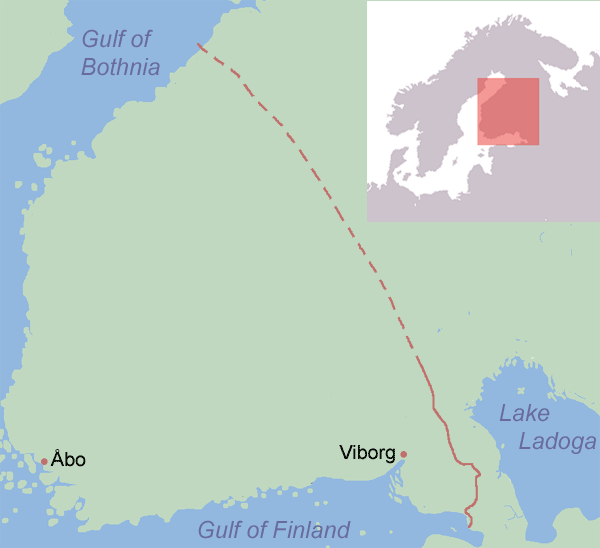
This meant the majority of modern-day Finland had fallen under Swedish control, which would last for six hundred years, when the Russians would finally get their revenge and make Finland part of their empire.
At the height of Sweden’s status as a great power in Europe, the borders of Finland had been pushed further and further east.
Why Did Finland Leave Sweden?
In 1808 Tzar Alexander I of Russia was forced by Napoleon to attack Sweden, ruled by Gustav IV Adolf, as part of Napoleon’s plan to take over Europe. It would be known as the Finnish War (which is where it was mainly fought) and would eventually result in Finland being ceded to Russia, as they had both Napoleon’s France and Denmark on their side, which proved to much in the end.
The reason the Russian Tzar joined the war hesitantly was because he was in effect forced to declare war to uphold his terms with Napoleon and the First French Empire that had been forged by means of French steel one year earlier. Nonetheless, Russia would arguably profit from this in the end.
The French-Russian terms were specifically that Russia had to declare war on Sweden if the Swedes did not formally join the French blockade of Great Britain, in Napoleon’s attempt to either force Sweden to join his “Continental System”, or invade via Denmark across Öresund.
As the Swedish King Gustav IV Adolf viewed Napoleon as Antichrist himself and Great Britain as a natural ally against this French tyranny, Sweden refused the threat. Subsequently, Russia attacked without even declaring war, and Great Britain joined in on the Swedish side.
This British-Swedish alliance would however not be able to stop the Russians from taking control over Finland in the end. The two-front war against both Russia in the east and France and Denmark in the south proved to be too much for the Swedish army.
The British navy was deployed to the Baltic Sea and did defeat the Russian navy, but this did not matter when the Baltic Sea froze to ice and the Russians could walk over it.
Did Finland Fight A War of Independence against Sweden?
Finland did not fight a war of independence against Sweden, as control of the country switched from Sweden to Russia after The Finnish War between the two Finnish neighbors in 1808 and 1809. Finland did however rise up against Russia around one hundred years later.
The Finnish fight for independence started in 1905 as the Russian Tzar started chipping away on Finnish autonomy within the empire, resulting in the Finnish Constitutionalists (fighting for free Finland against the Compliers who stood with Russia) forcing through a Finnish election.
In this election the Constitutionalists teamed up with the Social Democrats and the two were elected to form the most modern form of democracy Europe had at the time; a unicameral Parliament elected by equal and universal suffrage.
This “democracy” did not last long as the Russian Tzar Nicholas II instantly dissolved it and in 1910 imposed even stricter Russian rule over Finland, arming to eventually assimilate the country into the Russian Empire.
The Russian Revolution changed those plans in 1917, and Finland gained autonomy amidst the chaos for the first time in 700 years. As the Bolsheviks took control of Russia in November of 1917, Finland declared itself an independent nation for the first time in history (recognized by Lenin’s Soviet Union later the same year).
Similarities between Swedes and Finns
Are Sweden and Finland Allies?
Sweden and Finland are both part of NATO and are therefore formal military allies since 2024. The two countries have also signed a defense cooperation treaty (along with Norway) called NORDEFCO, with a common aim to improve cooperation between the three most Northern Nordic countries against an increasingly possible Russian threat.
If you’d like to read more about who Swedish is and isn’t allied to, I’ve written an article where I describe all the diplomatic ties Sweden has, explaining it’s role in connection to the Nordics, EU, as well as NATO.
Sources:
https://sverigesradio.se/artikel/4344786
https://www.expressen.se/geo/det-vaxande-hatet-mot-svensktalande-i-finland/
https://www.diva-portal.org/smash/get/diva2:114057/FULLTEXT03
http://magma.fi/post/2017/3/2/svenskarnas-finlandsbild-positiv-men-otydlig
https://unt.se/kultur/sa-tycker-finlandare-om-svenskar-133020.aspx
https://sverigesradio.se/artikel/6903002
 Is Finland Scandinavian? (The Full Answer)
Is Finland Scandinavian? (The Full Answer)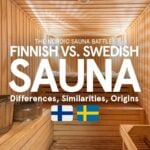 Finnish vs. Swedish Sauna: 5 Differences According to Finns in Sweden
Finnish vs. Swedish Sauna: 5 Differences According to Finns in Sweden Finnish Heritage: Nordic, Viking, and Baltic Ties Explained
Finnish Heritage: Nordic, Viking, and Baltic Ties Explained How Nordic People Understand & Talk To Each Other (+ Graphs)
How Nordic People Understand & Talk To Each Other (+ Graphs)

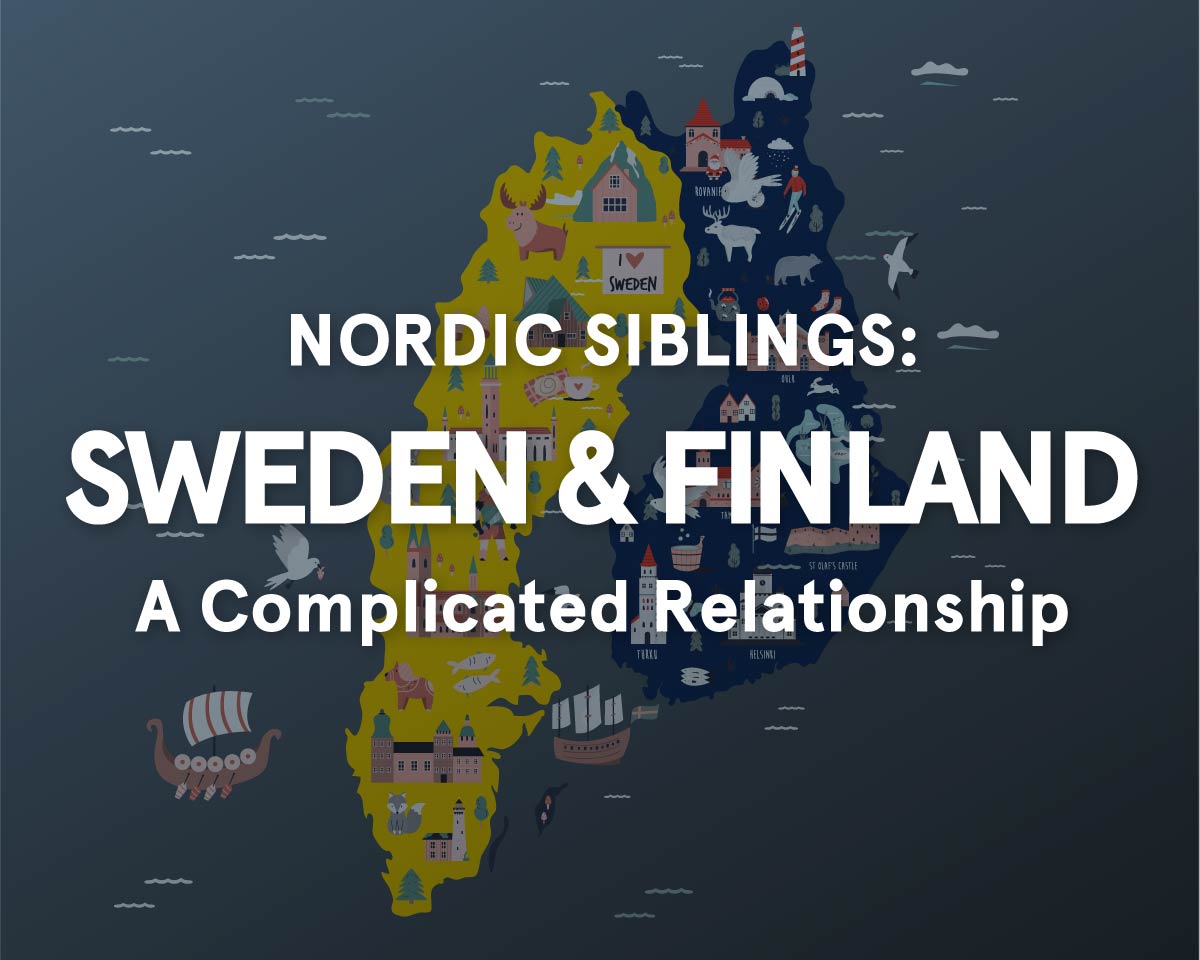
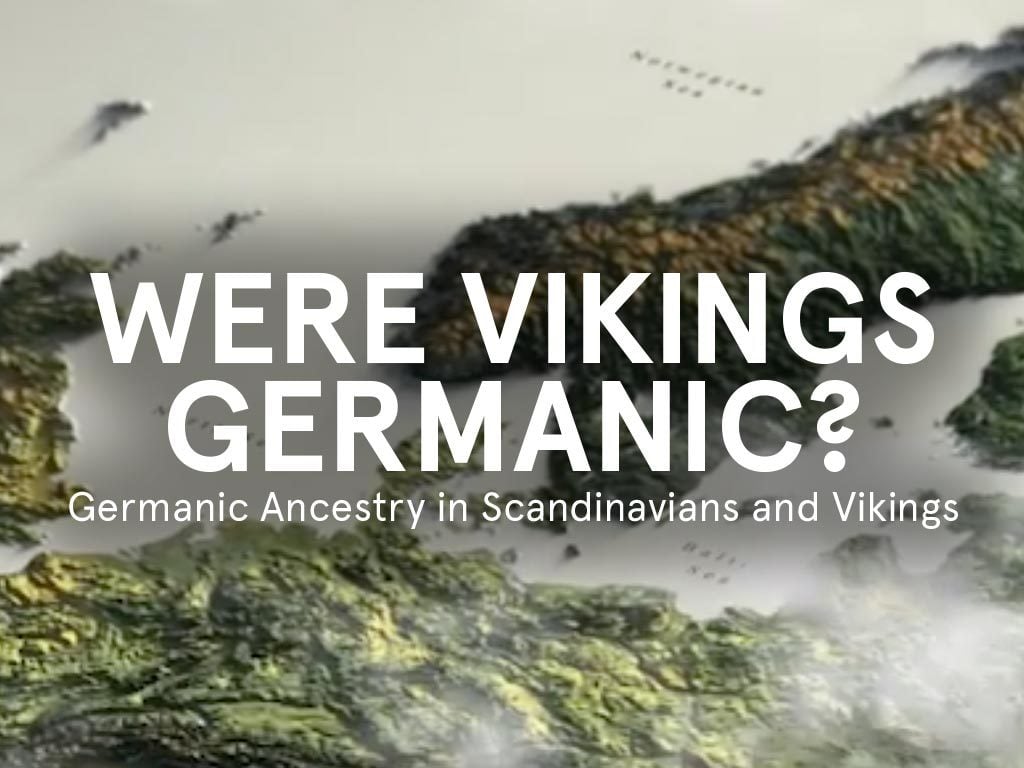
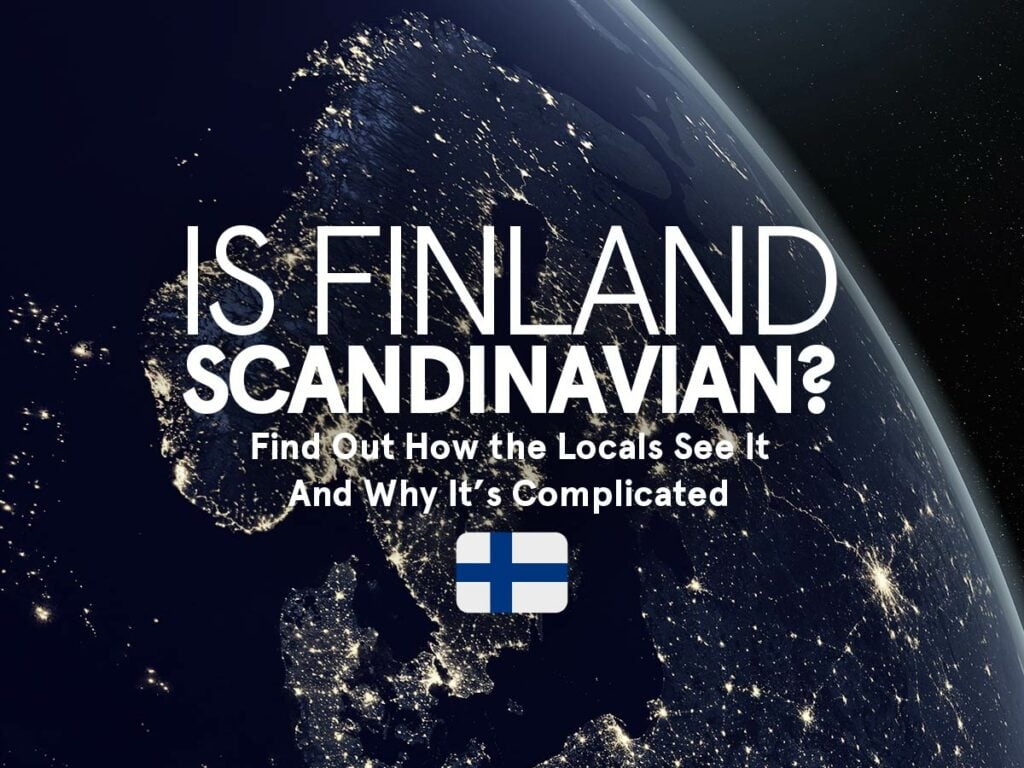
Thanks for the interesting article Karl Andersson. And I do wonder how interesting any family gathering would be with Swedish, Finnish and American relatives attending. Wow. Consuming lots of beer is probably not an option but more of a requirement. For your sanity. And kidney health. As an intelectual exercise I’d choose Sweden over Finland for residence as I’ve lived and interacted with American Conservatives all my life and in general, they are horrible. And it’s gotten much worse.
Thanks for reading John! And yes you’re quite correct in your assumption that our family gatherings can be quite interesting, and that beer is a requirement to keep things under control. 😆
Luckily all three cultures are quite fond of beer!
hälsa min vän!
Thanks to Google translate for the.., well, translation.
This is why I usually love the Internet.
Great article. I would be happy to read a similar comparison of Sweden and Norway.
In many places this article is moronic and just plain wrong, vitun rantaruotsalainen.
Oh.
Something that seldom is talked about when talking about the Swedish Crusades to the Eastern Lands is that during one of the battles against the Finns, the Finns were depicted as being both heathens and Christians fighting the Swedes. Early Finnish Churches also bear signs of a different Christianity based on the worship of Maria, which the Swedes do not. The main conclusion nowadays is that Swedes didn’t do the crusades for spreading Christianity but to strengthen economically by conquering new lands.
Also another forgotten piece of history is that the Swedish flag has it roots in Finland, has been both the Finnish Church flag and also Turku Castle flag and was introduced as the Swedish state flag by John III who also is the only Swedish King who actually spoke Finnish and there even urban legends that he was a changeling, those not the real son of Vasa.
Keep in mind that before John III the only flag used for Sweden was the Blue banner with 3 golden Crowns.